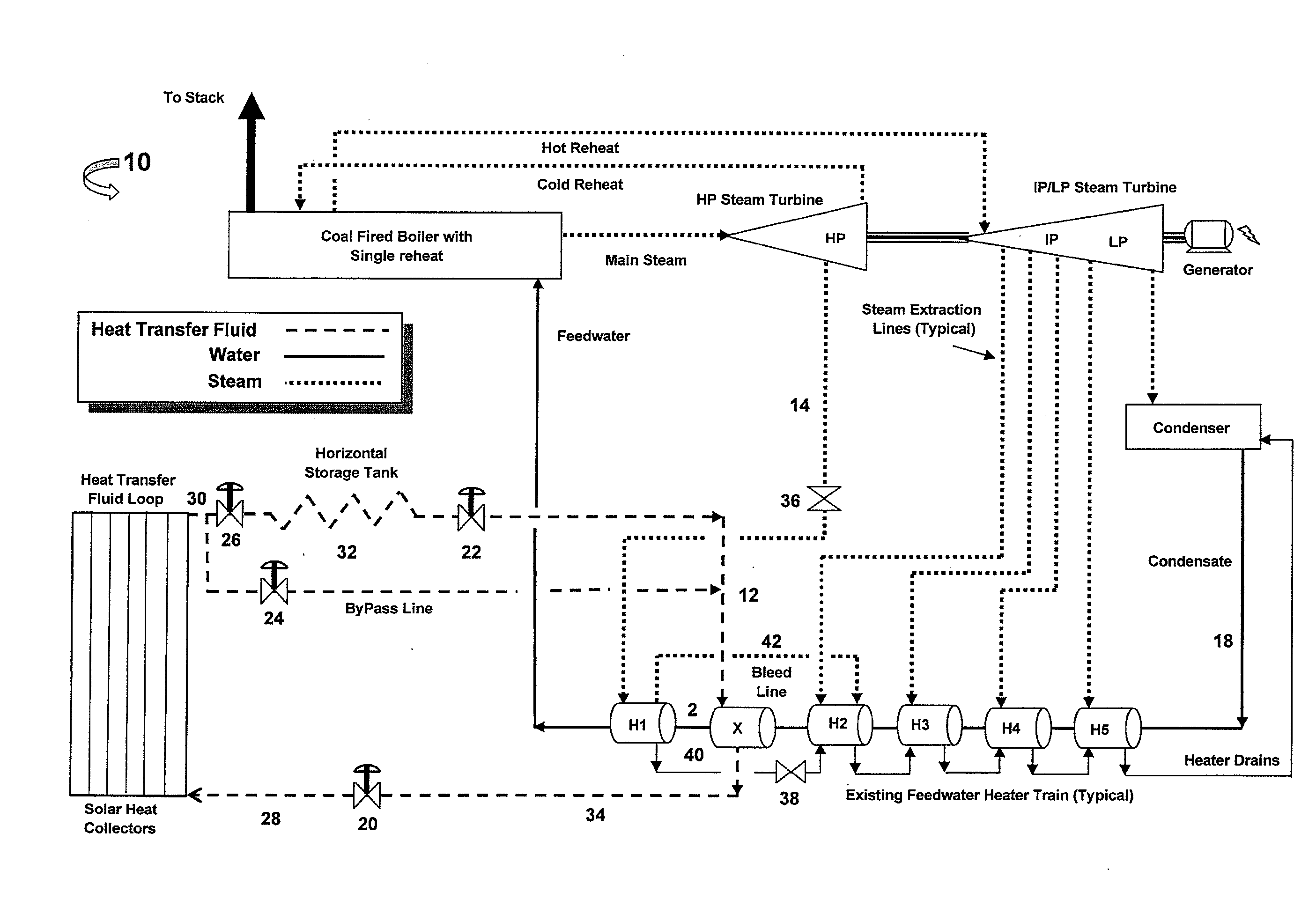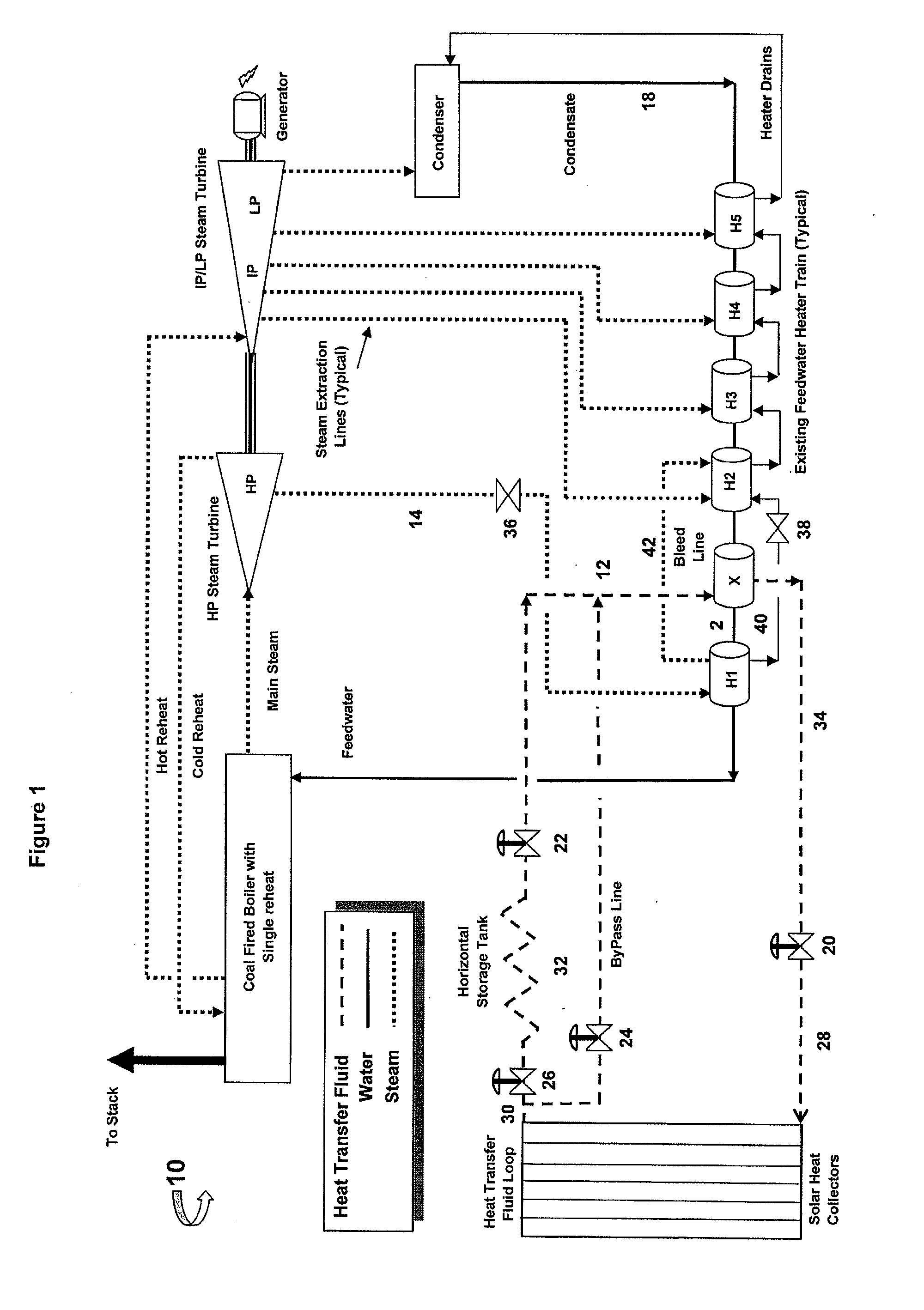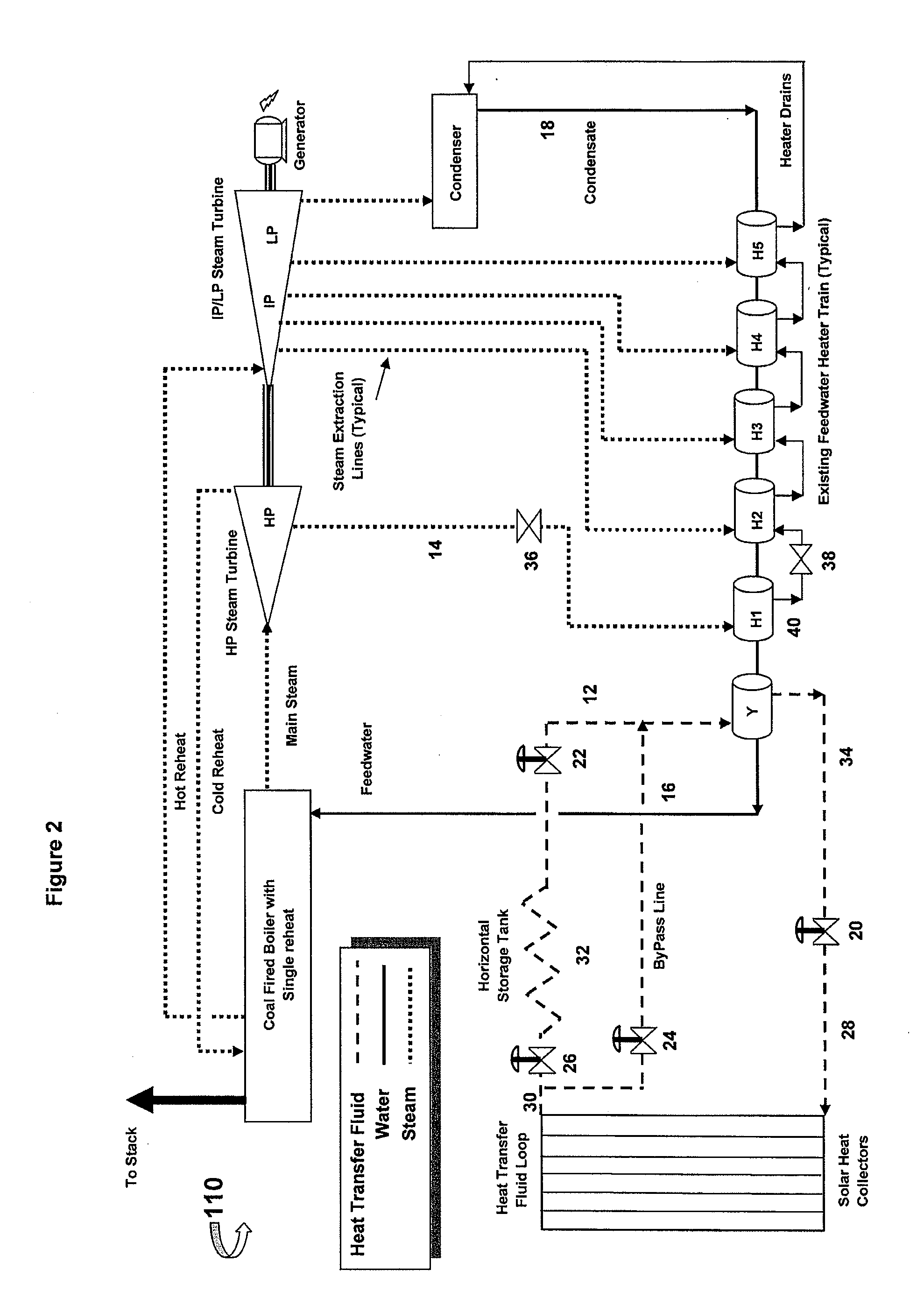Method of measurement, control, and regulation for the solar thermal hybridization of a fossil fired rankine cycle
a solar thermal hybridization and rankine technology, applied in the direction of process and machine control, lighting and heating apparatus, instruments, etc., can solve the problems of inability to compete with solar rankine power generation systems, relatively high cost of solar thermal generation facilities, and inefficient efficiency
- Summary
- Abstract
- Description
- Claims
- Application Information
AI Technical Summary
Benefits of technology
Problems solved by technology
Method used
Image
Examples
Embodiment Construction
[0035]The embodiments disclosed herein are described in the context of a coal-fueled Rankine cycle power generation system using regenerative heating because the embodiments disclosed herein have particular utility in this context. However, the embodiments of the methods and control routines described herein can also be applied to other types of power generation systems, including but not limited to natural gas or nuclear fueled boiler power generation systems and other regenerative steam Rankine cycle power generation systems.
[0036]In general, and with reference to FIGS. 1-3, a Rankine cycle power generation system can generate power through the vaporization and condensation of a working fluid (e.g. feedwater) in a heat cycle. Vaporization of the feedwater is accomplished in a boiler, with energy provided by the combustion of a fossil fuel, such as by the burning of coal. The feedwater can be water, which, upon the addition of sufficient heat energy, can vaporize into water steam. ...
PUM
 Login to View More
Login to View More Abstract
Description
Claims
Application Information
 Login to View More
Login to View More - R&D
- Intellectual Property
- Life Sciences
- Materials
- Tech Scout
- Unparalleled Data Quality
- Higher Quality Content
- 60% Fewer Hallucinations
Browse by: Latest US Patents, China's latest patents, Technical Efficacy Thesaurus, Application Domain, Technology Topic, Popular Technical Reports.
© 2025 PatSnap. All rights reserved.Legal|Privacy policy|Modern Slavery Act Transparency Statement|Sitemap|About US| Contact US: help@patsnap.com



